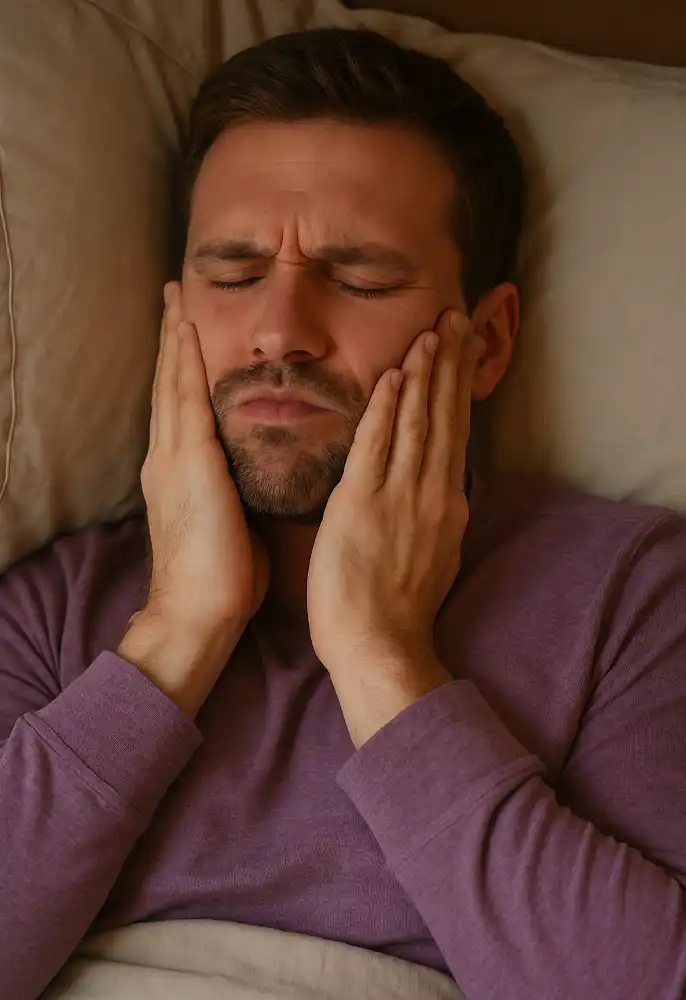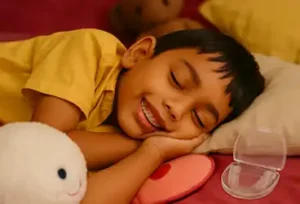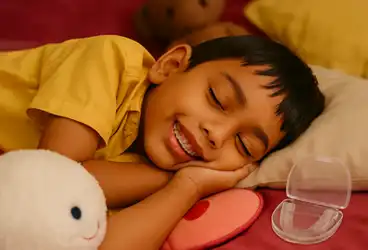Bruxism/Teeth Grinding
When you clench your teeth, you end up putting unnecessary pressure on structures around the jaw. Over time, this can lead to severe loss of tooth structure.
Bruxism/Teeth Grinding
When you clench your teeth, you end up putting unnecessary pressure on structures around the jaw. Over time, this can lead to severe loss of tooth structure.

Understanding Bruxism: Causes, Effects, and Management
Bruxism, commonly known as teeth grinding or jaw clenching, is a parafunctional activity of the masticatory system, meaning it's an unconscious habit that goes beyond the typical functions of chewing and swallowing.
Bruxism, commonly known as teeth grinding or jaw clenching, is a parafunctional activity of the masticatory system, meaning it’s an unconscious habit that goes beyond the typical functions of chewing and swallowing. This condition can occur while awake, often in response to stress, anxiety, or concentration, or it can happen during sleep. Sleep bruxism is classified as a sleep-related movement disorder and is frequently associated with other issues like snoring or obstructive sleep apnea. The forces generated during bruxism can be significant, often far exceeding those used for chewing food, which can lead to a variety of dental and medical complications.
The chronic nature of bruxism can cause a range of symptoms and serious long-term effects. Dentally, the constant grinding action can wear down tooth enamel, leading to flattened, fractured, or chipped teeth, and can even compromise existing dental work like fillings or crowns.
Children and Bruxism
 Childhood teeth grinding, or pediatric bruxism, can often be a complex issue with multiple contributing factors. While it is true that alignment problems between the upper and lower teeth can be a cause, it’s not always the only one. Many children also grind their teeth as an unconscious way to cope with physical discomfort, such as the pain associated with earaches or the irritation from teething.
Childhood teeth grinding, or pediatric bruxism, can often be a complex issue with multiple contributing factors. While it is true that alignment problems between the upper and lower teeth can be a cause, it’s not always the only one. Many children also grind their teeth as an unconscious way to cope with physical discomfort, such as the pain associated with earaches or the irritation from teething.
Beyond these common dental and pain-related issues, other factors can be at play. For instance, some children might experience bruxism due to airway problems, such as enlarged tonsils or adenoids, which can disrupt breathing during sleep. In these cases, the grinding may be a symptom of the child’s body trying to adjust or find a more comfortable breathing position, and often requires a specialist’s evaluation. It is also important to note that emotional stressors—like changes at home, school anxiety, or even simple excitement—can lead to grinding. Despite the various potential causes, many children naturally outgrow bruxism as their dental development progresses and they learn to better manage stress.
Children and Bruxism

Childhood teeth grinding, or pediatric bruxism, can often be a complex issue with multiple contributing factors. While it is true that alignment problems between the upper and lower teeth can be a cause, it’s not always the only one. Many children also grind their teeth as an unconscious way to cope with physical discomfort, such as the pain associated with earaches or the irritation from teething.
Beyond these common dental and pain-related issues, other factors can be at play. For instance, some children might experience bruxism due to airway problems, such as enlarged tonsils or adenoids, which can disrupt breathing during sleep. In these cases, the grinding may be a symptom of the child’s body trying to adjust or find a more comfortable breathing position, and often requires a specialist’s evaluation. It is also important to note that emotional stressors—like changes at home, school anxiety, or even simple excitement—can lead to grinding. Despite the various potential causes, many children naturally outgrow bruxism as their dental development progresses and they learn to better manage stress.
Signs and symptoms Bruxism may include:
- Audible teeth grinding at night which may disturb the sleep of those around you
- Rhythmic contractions of the jaw muscles resulting in tired or tight jaw muscles
- Long-lasting pain in the face, jaw, or neck
- Increased tooth pain, damaged teeth, worn tooth enamel and also broken dental fillings
- Dull headache starting in the temples
Treatment for Bruxism
To treat bruxism, a key intervention is the use of a custom-made occlusal splint, also known as a night guard. We can fabricate this for you, and it’s designed to fit precisely over your teeth. This splint acts as a protective barrier, absorbing the intense grinding and clenching forces to prevent wear and damage. Additionally, occlusal splints are often recommended to protect teeth that are already vulnerable, such as those with large fillings or crowns, from the excessive pressure associated with bruxism.
You might be also interested in
Family Dentist in Browns Plains
Family Dentist
in Browns Plains
At our Browns Plains dental office, we offer a complete range of services for the whole family, from routine check-ups to more specialized procedures. Our care includes restorative treatments like fillings, root canals, and extractions, as well as cosmetic and prosthetic options such as veneers, crowns, implants, and dentures. We also provide essential care for jaw joint issues, mouth guards, and preventive dentistry for children. To schedule your comprehensive exam, please call us at +61 434 921 570.